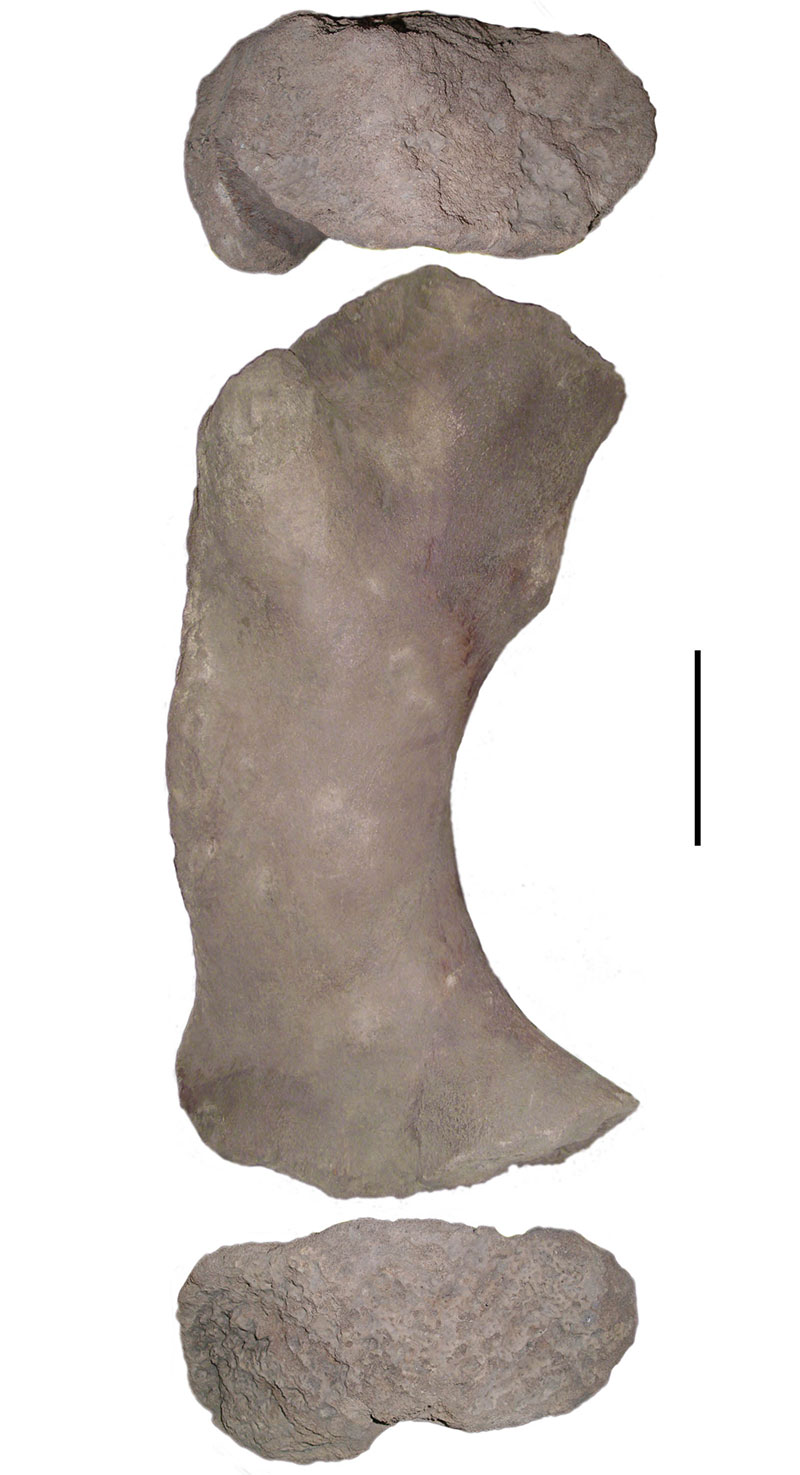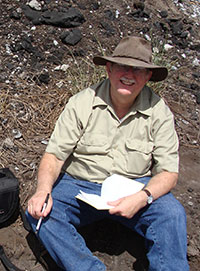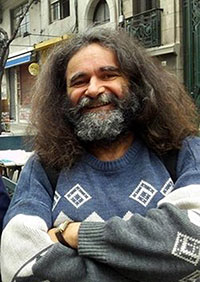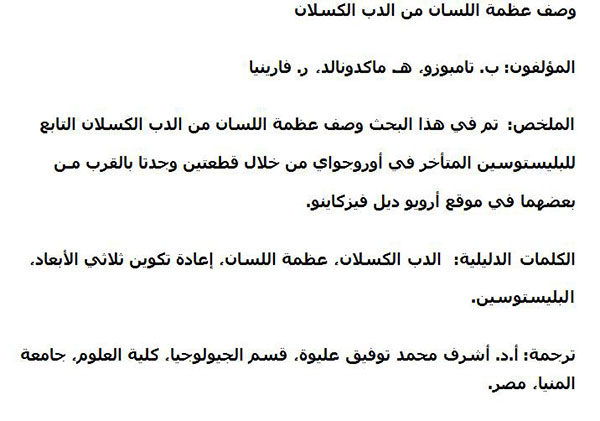Volume 28.2
May–August 2025
Full table of contents
ISSN: 1094-8074, web version;
1935-3952, print version
Recent Research Articles
See all articles in 28.2 May-August 2025
See all articles in 28.1 January-April 2025
See all articles in 27.3 September-December 2024
See all articles in 27.2 May-August 2024
Interested in submitting a paper to Palaeontologia Electronica?
Click here to register and submit.
Article Search
APPENDIX 1
Text of Concolorcorvo (1773): Gauderios
Estos son unos mozos nacidos en Montevideo y en los vecinos pagos. Mala camisa y peor vestido, procuran encubrir con uno o dos ponchos, de que hacen cama con los sudaderos del caballo, sirviéndoles de almohada la silla. Se hacen de una guitarrita, que aprenden a tocar muy mal y a cantar desentonadamente varias coplas, que estropean, y muchas que sacan de su cabeza, que regularmente ruedan sobre amores. Se pasean a su albedrío por toda la campaña y con notable complacencia de aquellos semibárbaros colonos, comen a su costa y pasan las semanas enteras tendidos sobre un cuero, cantando y tocando. Si pierden el caballo o se lo roban, les dan otro o lo toman de la campaña enlazándolo con un cabestro muy largo que llaman rosario. También cargan otro, con dos bolas en los extremos, del tamaño de las regulares con que se juega a los trucos, que muchas veces son de piedra que forran de cuero, para que el caballo se enrede en ellas, como asimismo en otras que llaman ramales, porque se componen de tres bolas, con que muchas veces lastiman los caballos, que no quedan de servicio, estimando este servicio en nada, así ellos como los dueños.
Muchas veces se juntan de éstos cuatro o cinco, y a veces más, con pretexto de ir al campo a divertirse, no llevando más prevención para su mantenimiento que el lazo, las bolas y un cuchillo. Se convienen un día para comer la picana de una vaca o novillo: le enlazan, derriban y bien trincado de pies y manos le sacan, casi vivo, toda la rabadilla con su cuero, y haciéndole unas picaduras por el lado de la carne, la asan mal, y medio cruda se la comen, sin más aderezo que un poco de sal, si la llevan por contingencia. Otras veces matan sólo una vaca o novillo por comer el matambre, que es la carne que tiene la res entre las costillas y el pellejo. Otras veces matan solamente por comer una lengua, que asan en el rescoldo. Otras se les antojan caracuces, que son los huesos que tienen tuétano, que revuelven con un palito, y se alimentan de aquella admirable sustancia; pero lo más prodigioso es verlos matar una vaca, sacarle el mondongo y todo el sebo que juntan en el vientre, y con sólo una brasa de fuego o un trozo de estiércol seco de las vacas, prenden fuego a aquel sebo, y luego que empieza a arder y comunicarse a la carne gorda y huesos, forma una extraordinaria iluminación, y así vuelven a unir el vientre de la vaca, dejando que respire el fuego por la boca y orificio, dejándola toda una noche o una considerable parte del día, para que se ase bien, y a la mañana o tarde la rodean los gauderios y con sus cuchillos va sacando cada uno el trozo que le conviene, sin pan ni otro aderezo alguno, y luego que satisfacen su apetito abandonan el resto, a excepción de uno u otro, que lleva un trozo a su campestre cortejo.
Venga ahora a espantarnos el gacetero de Londres con los trozos de vaca que se ponen en aquella capital en las mesas de estado. Si allí el mayor es de a 200 libras, de que comen doscientos milords, aquí se pone de a 500 sólo para siete u ocho gauderios, que una u otra vez convidan al dueño de la vaca o novillo, y se da por bien servido.
Text of Concolorcorvo (the original Spanish was written in 1773 and this is a loose modernization in terms of the English):
Gauderios
These are boys born in Montevideo and the neighboring regions. They wear a bad shirt and worse dress, covered up with one or two ponchos. Their bed is made with the saddle pads, and serves them as a chair or pillow. They get a small guitar that they play badly and sing out of tune (so spoiling them) several songs dealing regularly with love. They wander at will throughout the country and with remarkable complacency from those semi-barbarous settlers, eat at their expense and spend entire weeks lying on a hide, singing and playing the guitar. If their horse is lost or stolen, they will get another from the countryside by lassoing it with a long halter that they call a rosary. They also carry another lasso with two balls on the ends, the size of the regular ones that are used to play games, which are often made of stone and lined with leather, so the horse becomes entangled in them, as well as in other called 'branches', composed of three balls, which often hurts the horses that become useless, estimating this service as nothing, as much as their owners.
Many times they come together in groups of four or five, and sometimes more, under the pretext of going to the field to have fun, carrying with them no more for their maintenance than the lasso, the balls and a knife. They will spend a day eating the rump cap of a cow or bullock: it is lassoed, brought down and well-lashed from the feet and hands they removed, while the animal is almost alive, the whole rump with its skin, they also remove a few carvings of meat from the side, they barely roast it and eat it undercooked, with no more dressing than a little of salt, if they brought any by chance. Sometimes they only kill a cow or bullock to eat the matambre, which is the meat between the ribs and the skin. Sometimes they kill only to eat a tongue that they roast on the embers. Other times they crave caracuces, which are the bones that have marrow, that they stir with a stick, and then feed on that admirable substance; but most prodigious is to see them kill a cow, get the guts and all the tallow that collects in the belly, and with only an ember of fire or a piece of dried cow dung, set fire to that tallow, which then begins to burn and spreads to the fat flesh and bones, forming an extraordinary lighting, and so rejoins the belly of the cow, which breathes fire by the mouth and the hole, leaving it overnight or a substantial part of the day to roast well, and in the morning or afternoon the gauderios surround it and with his knives take out the piece that want, without bread or any other dressing, and then when they have satisfied their appetite they leave the rest, except for one or another, that carry a piece to his countryside entourage.
Come now to frighten us the journalists of London with the chunks of beef that are put in that capital on the tables of state. The largest is 200 pounds, serving two hundred milords, here it becomes 500 for only seven or eight gauderios, who at one time or another invite the owner of the cow or bullock, who then considers himself well served.
APPENDIX 2
Interactive Figures 3 and 4.
It appears you don't have a PDF plugin for this browser. You can click here to download the PDF file.
It appears you don't have a PDF plugin for this browser. You can click here to download the PDF file.
FIGURE 1. Left hyoid apparatus of the ground sloth Paramylodon harlani (modified from Stock, 1925). Shaded in grey is the fossil specimen analyzed in this work.

FIGURE 2. Juvenile stylohyal (CAV 476) in 1, medial view; 2, lateral view. The glittering of the cylindrical part is due to its having been bathed in gold for SEM observations; 3, close up of the cut mark analyzed by Fariña et al (2014); 4, close up of the marks in the midshaft. White arrows indicate probable trampling marks; black arrows indicate probable cut marks. Scale bar equals 50 mm.

FIGURE 3. Three-dimensional reconstruction of the juvenile ground sloth stylohyal (CAV 476). Medial view (3D object) available in Appendix 2.

FIGURE 4. Three-dimensional reconstruction of the stylohyal of adult Glossotherium (MNHN 914). Medial view (3D object) available in Appendix 2.

FIGURE 5. Stylohyals of 1, juvenile ground sloth (CAV 476); 2, adult Glossotherium (MNHN 914); 3, adult Scelidotherium .(MLP 3-671); 4, Adult Megatherium (MNHN PAM 297). Scale bar equals 50 mm.

FIGURE 6. Left femur of juvenile Lestodon (CAV 935) in posterior view showing the proximal (top) and distal (bottom) irregular surfaces of the diaphysis. Scale bar equals 100 mm.

 P. Sebastián Tambusso
P. Sebastián Tambusso
Sección Paleontología
Facultad de Ciencias
Universidad de la República
Iguá 4225
11400 Montevideo
Uruguay
pasebita@gmail.com
Sebastián is a paleontologist in the Section of Paleontology at Universidad de la República. He completed his Master degree in Zoology in 2013 working on the paleoneurology of glyptodonts and ground sloths. Currently is a Ph.D. student at Universidad de la República. His research interest focuses on the anatomy, paleobiology and biomechanic of Pleistocene xenarthrans, he is also interested in the use of digitizing techniques (CT scans, structured light scanning, photogrammetry) as a tool for investigation and communication of science.

 H. Gregory McDonald
H. Gregory McDonald
Museum Management Program
National Park Service
1201 Oakridge Drive
Fort Collins, Colorado 8052
USA
greg_mcdonald@nps.gov
Greg's research interests include the paleoecology, biogeography, systematics and evolution of fossil xenarthrans in both North and South America. He also works with other North American Pleistocene mammals looking at the relationship between their paleoecology and possible causes for their extinction.

 Richard A. Fariña
Richard A. Fariña
Sección Paleontología
Facultad de Ciencias
Universidad de la República
Iguá 4225
11400 Montevideo
Uruguay dogor@netgate.com.uy
Richard is a paleontologist in the Section of Paleontology at Universidad de la República. His research focuses in the paleobiology, paleoecology, biomechanics and extinction of South American vertebrates, particularly, the large ones. As a researcher, he likes to be cautiously daring. Sometimes he achieves it. He enjoys writing scientific papers, as well as popular books. He also performed and directed science documentaries.
Description of the stylohyal bone of a giant sloth (Lestodon armatus)
Plain Language Abstract
The hyoid apparatus is a series of articulated bones rarely preserved in fossil Xenarthrans. It functions in food intake and intraoral processing, as well as in the modulation of sounds. The largest bone, the stylohyal is the most frequently found as an isolated element. It is known for some species of Pleistocene ground sloths (Megalonyx jeffersonii, Megatherium americanum, Paramylodon harlani, Nothrotheriops shastensis, Glossotherium robustum, and Scelidotherium leptocephalum) but not for the largest mylodontid Lestodon armatus. Here we describe a right stylohyal found in the megafaunal bonebed of the Arroyo del Vizcaíno site, Uruguay. The specimen is inferred to have belonged to a juvenile individual because it lacks both the distal and proximal surfaces that articulate with the skull and the epihyal, respectively. Instead, both ends show an irregular surface as those seen in the contact with the growth cartilage. Its maximum length is 105 mm, which is larger than the equivalent part of the stylohyal of Glossotherium. These observations allow us to infer that the stylohyal of the Arroyo del Vizcaíno belongs to a juvenile Lestodon. The expanded proximal end in Glossotherium and Scelidotherium have a large fossa that cannot be observed in the juvenile specimen; this could be due to a taxonomic difference, to the stage of growth or both of them. The bone shows several marks, some of them are interpreted as caused by trampling and at least one has features as those left by human tools.
Resumen en Español
Descripción del hueso estilohial de un perezoso gigante (Lestodon armatus)
El aparato hioideo de los xenartros fósiles raramente se preserva. Su hueso mayor, el estilohial, es el que se encuentra más frecuentemente como elemento aislado. Se lo conoce para algunas especies de perezosos gigantes pleistocenos (Megalonyx jeffersonii, Megatherium americanum, Paramylodon harlani, Nothrotheriops shastensis, Glossotherium robustum y Scelidotherium leptocephalum) pero no para el milodóntido de mayor tamaño, Lestodon armatus. Aquí se describe un estilohial derecho encontrado en el sitio fosilífero pleistoceno del Arroyo del Vizcaíno, Uruguay, como dos piezas distantes pocos centímetros una de otra y que encajan perfectamente. Una pequeña hendidura, posiblemente una fractura concoidal lascada, se observa en la cara lateral. El ejemplar, cuya forma general es la de un cilindro sinusoide con el extremo próximo expandido y aplastado, debe de haber pertenecido a un individuo juvenil, puesto que carece de las superficies distal y proximal que articulan respectivamente con el cráneo y el epihial. En vez de ello, ambos extremos muestran una superficie irregular como las que se ven en el contacto con el cartílago de crecimiento. Además, su longitud máxima es de 105 mm, es decir, más larga que la parte equivalente del estilohial de un Glossotherium adulto. En el extremo proximal expandido que articula con el cráneo, no se puede observar la gran fosa presente en Glossotherium y Scelidotherium. Esto puede ser debido a una diferencia taxonómica, al estado de crecimiento o a ambos factores. El hueso muestra marcas, varias interpretadas como causadas por pisoteo y al menos una con características como las que dejan las herramientas humanas.
Palabras clave: perezoso gigante; hueso estilohial; reconstrucción tridimensional; Pleistoceno
Traducción: Authors and Enrique Peñalver
Résumé en Français
Description de l'os stylohyale d'un paresseux géant (Lestodon armatus)
L'appareil hyoïde chez les Xénarthres fossiles est rarement conservée. Son plus grand os, le stylohyale, est le plus souvent trouvé comme un élément isolé. Il est connu pour certaines espèces de paresseux terrestres du Pléistocène (Megalonyx jeffersonii, Megatherium americanum, Paramylodon harlani, Nothrotheriops shastensis, Glossotherium robustum et Scelidotherium leptocephalum) mais pas pour le plus grand mylodontide, Lestodon armatus. Ici, nous décrivons un stylohyale droit trouvé dans un dépôt de mégafaune de la fin du Pléistocène du site Arroyo del Vizcaíno, Uruguay, comme deux pièces parfaitement appariées qui étaient à quelques centimètres l'une de l'autre. Une petite encoche, peut-être un effritement conchoïdal d'une fracture perimortem, est observée dans la face latérale. Le spécimen, dont la forme générale est un cylindre sinusoïde avec l'extrémité proximale expansé et comprimé, doit appartenir à un individu juvénile, car il manque les deux surfaces distale et proximale qui s'articulent avec le crâne et l'épihyale, respectivement. Au lieu de cela, les deux extrémités présentent une surface irrégulière comme celles observées dans le contact avec le cartilage de croissance. En outre, sa longueur maximale est de 105 mm, plus grande que la partie équivalente du stylohyale chez les adultes de Glossotherium. A l'extrémité proximale élargie, qui s'articule avec le crâne, la grande fosse trouvée chez Glossotherium et Scelidotherium n'est pas observée, ce qui pourrait être dû à une différence taxonomique, le stade de croissance ou les deux. L'os montre plusieurs marques, interprétés comme causée par le piétinement et au moins une avec des caractéristiques laissées par des outils humains.
Mots-clés: paresseux terrestres; stylohyale; reconstruction tridimensionnelle; Pléistocène
Translator: Kenny J. Travouillon
Deutsche Zusammenfassung
Beschreibung des stylohyalen Knochens eines Riesenfaultiers (Lestodon armatus)
Der Hyoid-Apparat ist bei fossilien Xenarthra selten erhalten. Der größte Knochen des Apparates, das Stylohyale ist das am meisten gefundene isolierte Element. Es ist bei einigen Arten von pleistozänen Riesenfaultieren wie (Megalonyx jeffersonii, Megatherium americanum, Paramylodon harlani, Nothrotheriops shastensis, Glossotherium robustum und Scelidotherium leptocephalum) bekannt, jedoch nicht bei dem größten Mylodontiden Lestodon armatus. Hier beschreiben wir ein rechtes Stylohyale, das als zwei perfekt zusammenpassende Teile, nur wenige Zentimeter voneineder entfertnt im spätpleistozänen Megafaunen-Bonebed der Arroyo del Vizcaíno Fundstelle von Uruguay gefunden wurde. Auf der lateralen Seite ist eine kleine Kerbe, möglicherweise ein conchoidaler abgeblätterter perimortaler Bruch, sichtbar. Das Stück das die Form eines sinusoiden Zylinders hat und dessen proximales Endstück verbreitert und zusammengedrückt ist muss zu einem Jungtier gehört haben, da sowohl die distalen als auch proximalen Oberflächen fehlten, die mit dem Schädel und dem Epihyale artikulierten. Stattdessen zeigen beide Enden eine irreguläre Oberfläche wie man sie beim Kontakt mit Knorpel kennt. Zusätzlich ist der Knochen 105mm lang, was länger ist als der entsprechende Teil des Stylohyales beim adulten Glossotherium. Am verbreiterten proximalen Endstück, welches mit dem Schädel artikuliert, tritt die große Grube, die bei Glossotherium und Scelidotherium zu finden ist nicht auf. Dies kann an einem taxonomischen Unterschied, an den Wachstumsphasen oder an beidem liegen. Der Knochen zeigt Markierungen, einige werden dahingehend interpretiert, das darübergetrampelt wurde und mindestens eine weist Merkmale von menschlichen Werkzeugen auf.
Schlüsselwörter: Riesenfaultiere; Stylohyale; dreidimensionale Rekonstruktion; Pleistozän
Translator: Eva Gebauer
Arabic

Translator: Ashraf M.T. Elewa
-
-
PE: An influential journal
 Palaeontologia Electronica among the most influential palaeontological journals
Palaeontologia Electronica among the most influential palaeontological journalsArticle number: 27.2.2E
July 2024





 A Review of Handbook of Paleoichthyology Volume 8a: Actinopterygii I, Palaeoniscimorpha, Stem Neopterygii, Chondrostei
A Review of Handbook of Paleoichthyology Volume 8a: Actinopterygii I, Palaeoniscimorpha, Stem Neopterygii, Chondrostei